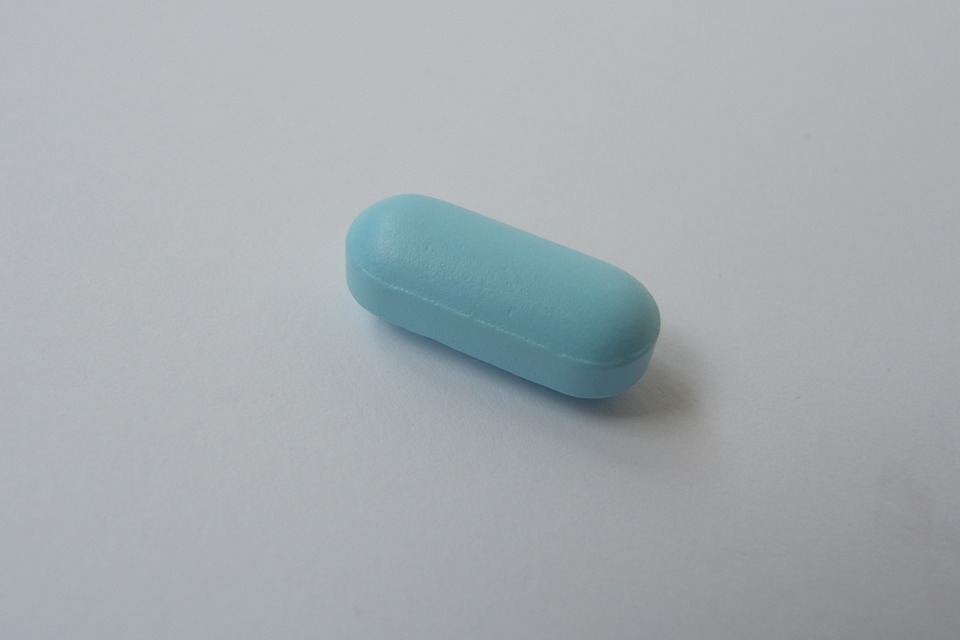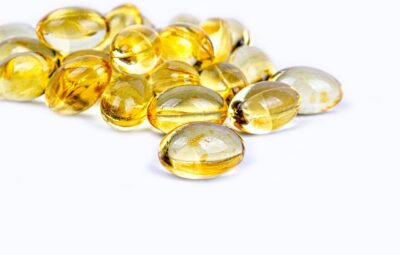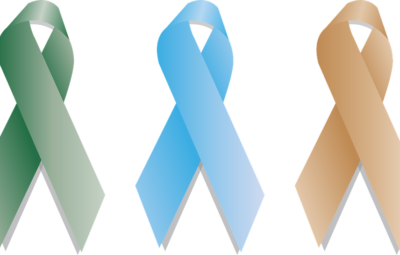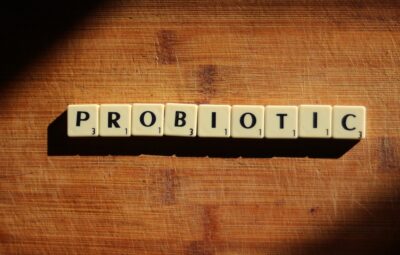Figures indicate that by age 60, half of males would demonstrate indications of BPH (benign prostatic hyperplasia), a condition that is common in males.
Though it doesn’t automatically indicate that you have prostate cancer, having an enlarged prostate could bring about some discomfort and embarrassing symptoms.
Treatment of BPH is typically accomplished by prescribing a medication called Finasteride.
A great deal of research has revealed some concerning consequences associated with this popular medication.
This in-depth analysis will examine Finasteride closely to understand how dangerous it is for prostate health versus how beneficial it is.
How Was Finasteride Created?
Roy Vagelos, an American doctor and corporate leader, was instrumental in the creation of Finasteride in 1975. During his time as president of the pharmaceutical company Merck & Co, he played a major role in the development of this drug.
He was motivated to take action after reading a paper by Dr. Julianne Imperato-McGinley, an endocrinologist at Cornell Medical College.
Dr. Imperato mentioned a medical issue that children in a village located in the Dominican Republic were experiencing.
A considerable amount of infants were seen to be ambiguously gender-related when they were freshly born and began their lives with female care.
Nevertheless, soon after adolescents reach a certain age, their male genital parts and other male traits become externally visible.
This groundbreaking study determined that these kids all had the same genetic alteration. The change caused a lack of an enzyme that converts testosterone into dihydrotestosterone (DHT).
DHT is known to be a much more powerful form of testosterone which causes adolescent males to enter adolescence and encourages the enlargement of prostate tissue in older males.
The name of the affected enzyme was 5-αlpha reductase. The children had diminished amounts of DHT, causing them to not develop sexual characteristics like the presence of outside testicles and a penis.
At the stage of adolescence, the rise in testosterone levels facilitated distinguishing between sexes, though some variants were seen in ordinary people.
One of them had an abnormal prostate, which was significantly smaller and not fully developed. In later years, they were also less prone to male-pattern baldness.
Merck & Co. sought to develop a medication that had the same impact in both preserving a reduction in prostate size and shielding against male pattern baldness.
The result was the invention of Finasteride, given the go-ahead in 1992 by the FDA for the curing of Benign Prostatic Hyperplasia.
The medication, also known as Proscar, obtained the go-ahead from the Food and Drug Administration in 1997 for a reduced dosage form to treat Male Pattern Baldness (MPB).
This was marketed under the brand name Propecia.
How Does Finasteride Work?
Finasteride is a substance that halts the enzyme 5-alpha-reductase from changing testosterone into DHT.
The amount of DHT largely determines the size and rate of increase of the prostate.
There are two forms of 5 alpha-reductase; the first is found in tissues such as the liver or skin and the second is mainly located in the prostate.
This enzyme is necessary for the typical growth of the prostate and abnormal enlargement later on in life.
Finasteride blocks the activity of type 2 5α-reductase enzyme.
Research has shown that taking Finasteride leads to a decrease of 91.4% in the amount of DHT found in the prostate.
In spite of worries about the considerable reduction involved, both proponents of the drug and Merck have contended that Finasteride does not cause DHT levels to plunge so severely that the patient is subjected to chemical castration.
The type 1 isoenzyme resides in the liver and skin and is responsible for changing testosterone in circulation into DHT.
It has been suggested that Finasteride may cause the most severe sexual side effects when compared to the other medications investigated in the research.
Finasteride works to shrink the prostate size by reducing the amount of DHT in the body. It usually requires 3-6 months for the treatment to take full effect and for the prostate to start shrinking.
Consequently, one will not be able to experience the effects of Finasteride and 5 alpha-reductase inhibitors until they have been taking the medication for a lengthy amount of time.
Sadly, the effects of a medicine may start to become evident in a few days or weeks and could continue to worsen as time progresses.
Finasteride is generally given to men who have abnormally large prostate glands, larger than 40 or 50 grams.
These individuals are most susceptible to developing an illness, exhibit symptoms of a moderate to extreme nature that are indicative of a lower urinary tract disorder, and are likely to suffer from abrupt urinary retention.
Common Side Effects of Finasteride
Finasteride underwent an extensive evaluation process, similar to other medications authorized by the FDA, prior to its availability for purchase.
Due to this reason, a wealth of information is available about the possible adverse effects, as well as the dangers and medication interactions associated with it.
It is essential to be conscious that there are two forms of finasteride when investigating the adverse effects that this produces.
The primary treatment for hair loss is Propecia, which is the name for finasteride. This finasteride tablet can be taken once a day with a dosage of 1mg. The type of finasteride prescribed for people with male pattern baldness or androgenetic alopecia is this form.
Propecia is the marketed name for Finasteride 1mg, which is also available in generic form. The effects of both the trade-name form of finasteride and its generic counterpart are identical when it comes to hair development.
Prescribed to treat an enlarged prostate, Proscar® is a strong form of finasteride. This medication contains 5mg of finasteride per tablet. Because of the higher amount being used, it is more probable that specific adverse reactions will occur.
Common side effects of 1mg finasteride include:
- Erectile dysfunction (ED). In clinical trials, approximately 1.3 percent of men who took finasteride experienced erectile dysfunction, compared to 0.7 percent of men who used a non-therapeutic placebo.
- Decreased libido. Approximately 1.8 percent of men who used finasteride 1mg reported a reduced level of interest in sex, compared to 1.3 percent of men who were treated with a non-therapeutic placebo.
- Ejaculation disorder. In total, 1.2 percent of men who used finasteride reported issues related to ejaculation, with 0.8 percent reporting a lower semen volume. In comparison, 0.4 percent of men who used a placebo treatment reported lower semen volume.
Very little of the men who were tested on finasteride in scientific experiments experienced serious negative reactions. Only 1.2 percent of male trial participants ceased using finasteride due to negative side effects.
It should be noted that 0.9 percent of men testing a dummy treatment in clinical experiments also ended the process due to unfavorable effects, suggesting that the possibility of extreme side effects due to finasteride is very low.
As anticipated, more adverse reactions are usually connected with the 5 milligrams of finasteride which is utilized to treat an enlarged prostate, or BPH.
In one-year clinical trials of Proscar (finasteride 5mg), men who used finasteride at a daily dose of 5mg reported the following side effects:
- Erectile dysfunction (ED). Erectile dysfunction was reported by 8.1 percent of men who used finasteride, compared to 3.7 percent of men who used a non-therapeutic placebo.
- Decreased libido. A reduced level of interest in sex was reported by 3.7 percent of men who used finasteride, compared ot 3.4 percent of men who used a placebo.
- Changes in ejaculation. Decreased ejaculation volume and ejaculation disorder were reported by 3.7 and 0.8 percent of men who used finasteride, compared to 0.8 and 0.1 percent of men who used a non-therapeutic placebo.
- Breast enlargement and/or tenderness. Enlargement of breast tissue and tenderness of the breasts was reported by 0.5 percent and 0.4 percent of men who used finasteride, compared to 0.1 percent of men who used a non-therapeutic placebo.
- Skin rash. 0.5 percent of men who received finasteride reported developing a skin rash, compared to 0.2 percent of men who used a non-therapeutic placebo.
It seems that the effects of finasteride on sexual health diminish when it has been taken for a prolonged period of time.
Less Common Finasteride Side Effects
Finasteride may also cause other, less common side effects. Some of the symptoms that could result from testicular cancer are feelings of dejection, aches in the testicles, soreness in the breasts, the presence of blood in semen, or pain or secretion from the nipples.
A small portion of males who take finasteride experience adverse reactions. It’s crucial to let your doctor know if you have lasting or intense symptoms after taking finasteride.
It is possible for certain components in finasteride to bring about an allergic response in certain individuals. Possible indications of an allergy may be rash, hives, irritation, and swelling on the tongue, lips, face, or throat.
It is important to let your doctor know immediately if you experience any symptoms of an allergy after taking finasteride.
How to Reduce Side Effects From Finasteride
Adverse reactions are an unavoidable part of nearly all drugs. Nevertheless, taking finasteride as directed may decrease your chances of having adverse reactions.
Try the the following tips and techniques to use finasteride safely:
- Take finasteride at the correct dosage. Finasteride is prescribed at a dosage of 1mg per day to treat male pattern baldness. There’s no need to take a higher dose than this, as it won’t improve your results.
- Using finasteride at a higher dosage may increase your risk of side effects. Stick to your recommended dosage and inform your healthcare provider if you develop any issues.
- Try to take finasteride at around the same time each day. Finasteride typically works best when it’s taken at approximately the same time every day. You can use finasteride with or without food.
- If you forget a dose, skip it and wait for the next one. If you forget to take finasteride, skip the missed dose and continue your regular dosing schedule the next day.
- Do not take more than one dose of finasteride at a time. Taking more than one dose of finasteride, even if to make up for a missed dose, could increase your risk of developing side effects.
- If you develop side effects, let your healthcare provider know. In certain cases, side effects are a temporary annoyance. Make sure to inform your healthcare provider so that they can track your progress and, if necessary, provide expert advice.
- Tell your healthcare provider about other medications. Finasteride generally doesn’t cause interactions with other drugs. However, it’s still important to tell your healthcare provider about any other medications you use or medical conditions you may have.
- Store finasteride properly. Finasteride should be stored at room temperature inside its original container. Avoid storing finasteride in the bathroom or other spaces with heat or excessive moisture.
- Consider taking finasteride at a lower dosage. If you experience severe or persistent side effects after starting finasteride, your healthcare provider may recommend reducing your dosage.
An alternative that may lessen the chances of developing side effects is to use topical finasteride, which is simply a type of finasteride that is applied topically to the scalp.
Topical finasteride is similar to oral finasteride in that it acts to decrease the amount of DHT in the body. However, DHT affects only your scalp, so there is a less widespread impact of DHT concentrations in your bloodstream and body.
Recently, research was conducted and a publication was printed in the Journal of the European Academy of Dermatology and Venereology indicating that utilizing topical finasteride can help with hair loss, while having a smaller chance of undesirable effects compared to other treatments.
Does Finasteride Alleviate Symptoms?
After the FDA gave the nod of approval, a big research project was conducted to look into how well Finasteride works.
A total of 895 people suffering from benign prostatic hyperplasia (BPH) were given either a sugar pill (placebo) or 1 milligram or 5 milligrams of Finasteride over a 12 month period (Gormley, 1992).
The main results used were a rating of the symptoms and a peak flow rate, while the size of the prostate was also logged.
The symptom score measures the total scores of nine symptoms:
- Decreased urinary stream
- Dribbling
- Interruption in the stream
- Hesitancy
- Feeling of incomplete emptying
- Straining to initiate flow
- Urgency
- Incontinence
- Dysuria
Those who were given the ordinary 5 mg amount of Finasteride orally each day showed a noticeable change in their condition (21% better) compared to the placebo-controlled group (only 2% better).
A different group who were taking a decreased amount of finasteride (1 milligram by mouth every day) did not demonstrate any detectable changes in indications when compared to the group taking the placebo.
Additional research has determined that this reaction is connected to the size of the prostate when the therapy began.
Boyle et al. in 1996 conducted an extensive analysis, collecting data from six randomized, placebo-controlled studies, to reach a more reliable consensus.
It was determined that men with smaller prostates experienced virtually no alleviation of their symptoms as opposed to men with bigger prostates.
The majority of the difference in the outcomes of the various studies was explained by the variance in average prostate size. The most noticeable positive impacts are most evident in males with an enlarged prostate size greater than 25 mL.
Conclusion
This research is beneficial as it emphasizes the broad fluctuation among BPH sufferers when taking Finasteride treatment. Everyone’s body responds differently to medications compared to others.
The extent of the side effects you may be exposed to and the efficacy of the drugs for you may vary.
Be sure to talk to your healthcare provider before using Finasteride about any potential drawbacks it might have.
The doctor or urologist will utilize these elements to make a determination of whether or not finasteride should be taken; The most telling sign is the size of the prostate, which will give an indication of if finasteride is going to be of assistance.
Think about if you can be patient for six to twelve months to notice a typical reduction of 20% in your symptoms.
The potential for less aggressive cancers should be weighed against the higher likelihood of more aggressive cancers. Then there are psychological impacts concerning one’s mood and a decrease in cognitive abilities.
After consulting with both our medical and customer service staff, male patients who take Finasteride expressed their main frustration and remorse to be the sexual adverse effects that it brings.
Research has demonstrated that Finasteride may result in sexual issues that can stay for prolonged periods or even extend to several years.







